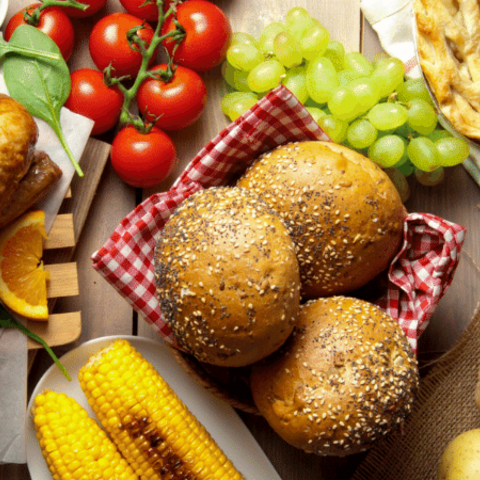
Making holiday recipes healthier may be easier than you think. Make simple ingredient substitutions or adjustments to create healthier recipes without forfeiting flavor and enjoyment. Many traditional foods served during the holidays start out healthy. It's what is added to them and how they are prepared that add extra calories and fat. Start a tradition this holiday season by getting creative and making your holiday recipes healthier through simple substitutions and adjustments.
Healthier Holiday Eating Tips
- Lower the fat. Use half the butter, shortening or oil in baked goods and replace the other half with unsweetened applesauce, prune puree, or mashed banana. If the recipe calls for regular sour cream or mayonnaise, replace them with reduced-fat versions. For dip recipes, try using plain, low-fat or non-fat yogurt in place of mayonnaise. Skim excess fat from the top of soups, gravies and stews. Use skim or low-fat milk instead of whole milk. Choose lean meats, and drain excess fat after cooking.
- Reduce sugar. In baked goods, such as quick breads, cookies, pie fillings, custard, puddings and fruit crisps, reduce the sugar by one-fourth to one-third. When you use less sugar in recipes, add spices such as cinnamon, cloves, allspice and nutmeg or flavorings such as vanilla extract or almond flavoring to enhance the sweetness of the food. Don't reduce sugar in yeast breads because it provides food for the yeast and promotes rising.
- Be sodium savvy. Drain liquid from canned vegetables and rinse with water. In many recipes, salt may be reduced or deleted altogether. Choose fresh or low-sodium versions of products such as low-sodium soups, broths, soy sauce, canned vegetables and tomato products. When the recipe calls for seasoning salt, such as garlic salt, celery salt, or onion salt, try using herb-only seasoning, such as garlic powder, celery seed, or onion flakes. Or use finely chopped herbs, garlic, celery, or onions. Don't cut salt out of yeast breads because it helps control the rising action of yeast.
- Increase fiber. Try using whole-wheat flour and bread, bulgur, whole-wheat pasta, brown rice, oatmeal, whole cornmeal or barley in recipes and dishes. Substitute whole-wheat flour for half of the all-purpose flour in a recipe. Vegetables are another great way to increase the fiber of dishes, add a variety of vitamins and minerals, and make meals stretch further. Add vegetables to chili, meatloaf, hamburgers and spaghetti sauce. Add extra vegetables to quiche fillings, casseroles and salads. Beans such as kidney, pinto or navy beans are great for soups or stews. Fruits can be added to muffins, pancakes, desserts, and salads.
- Use healthier cooking techniques. Try using nonstick pans or spraying pans with nonstick cooking spray to reduce the amount of fat and calories added to baked goods. Choose healthier cooking methods that use less fat, such as baking, broiling, grilling, poaching, steaming or microwaving.
Healthier Holiday Recipes
Sources:
Tips for Healthy Eating for a Healthy Weight, Centers for Disease Control and Prevention (CDC)
Healthy Eating for Adults, MyPlate, United States Department of Agriculture (USDA)
Tags:










